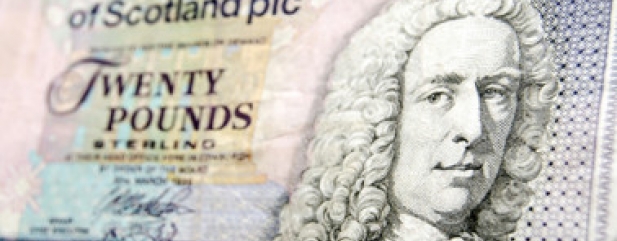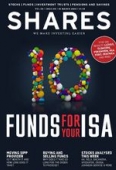Archived article
Please note that tax, investment, pension and ISA rules can change and the information and any views contained in this article may now be inaccurate.
Scottish income tax overhaul – how will it affect your pension?

If you’re a Scottish taxpayer, big changes are just around the corner. From April this year some people north of the border will pay a different rate of income tax to their counterparts in the rest of the UK.
It is the first time the Scottish Government has used powers that allow it to set additional income tax rates from the rest of the UK. Two new tax bands (‘starter rate’ and ‘intermediate rate’) will be established, while the higher and additional income tax rates will also be increased (see table for details).
The move will have a knock-on impact on pension savers in Scotland who currently receive pension tax relief at their marginal rate. HMRC has now confirmed details of how this will work.
RELIEF AT SOURCE
Members of schemes which apply tax relief after they have paid income tax – known in the jargon as ‘relief at source’ – will be affected in different ways.
Savers will still receive tax relief automatically at the basic rate of 20%, meaning those falling into the starter rate (£11,850 - £13,850) and basic rate (£13,850 - £24,000) bands won’t have to do anything in order to receive the tax relief they are due. HMRC will not recover the difference between the Scottish starter and Scottish basic rate.
However, anyone who falls into the new 21% intermediate band (£24,000 - £43,430) will need to tell HMRC in order to get the extra 1% of tax relief they are entitled to. Many of these people will never have filled out a tax return before and may well question whether it’s worth the hassle.
Someone who earns £30,000 and contributes 10% of their salary would pay in £2,400 over the course of a year, receive tax relief at source of £600 and can then reclaim an extra £30. While this might not sound like a lot, over the course of a lifetime that could add up to thousands of pounds.
Higher and additional-rate taxpayers will continue to apply for their tax relief through self-assessment, as they do at the moment. People in these tax brackets will have an extra reason to save in a pension though as they get an additional 1% in tax relief under the new framework.
NET PAY
Some pension schemes operate pension tax relief on a ‘net pay’ basis. This simply means pension contributions are deducted before income tax is applied to their pay. These arrangements have caused controversy in the rest of the UK because people who pay no income tax do not receive a pension tax relief top-up automatically.
HMRC has confirmed these schemes will continue to operate in the same way for residents north of the border as they do now under the new tax regime.
Tom Selby, senior analyst, AJ Bell
Important information:
These articles are provided by Shares magazine which is published by AJ Bell Media, a part of AJ Bell. Shares is not written by AJ Bell.
Shares is provided for your general information and use and is not a personal recommendation to invest. It is not intended to be relied upon by you in making or not making any investment decisions. The investments referred to in these articles will not be suitable for all investors. If in doubt please seek appropriate independent financial advice.
Investors acting on the information in these articles do so at their own risk and AJ Bell Media and its staff do not accept liability for losses suffered by investors as a result of their investment decisions.
Issue contents
Big News
- Virgin Money results beat forecasts but doubts over ability to perform
- Lithium miner Bacanora prepares for substantial fundraise
- Greggs’ nourishing performance
- How did investors react to the latest batch of FTSE 100 results?
- Will there be a bidding war for Sky?
- RIT Capital Partners reveals stellar gains since 1988’s flotation
- Triple Point eyes listing upgrade and £200m new cash
- IntegraFin to be valued at c£650m at IPO
- Threads expert Coats impresses on margins and profit guidance
- Productivity growth hits its highest rate since the financial crisis

 magazine
magazine









